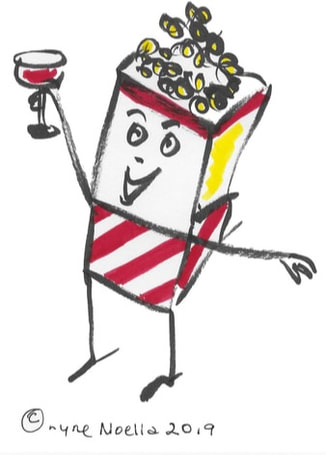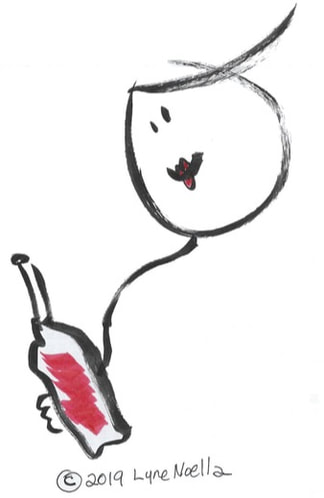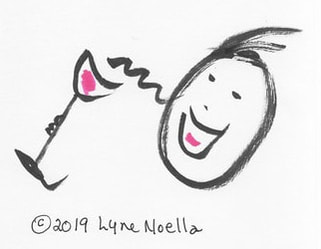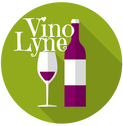 Let’s get one thing straight: Nobody can say you’re wrong about what you like and what you don’t like in a wine. Your palate, or your appreciation of taste and flavor, is your own. You are entitled to your entire range of tastes, feelings and perceptions of every wine that meets your lips: red, white, rosé, still or sparkling. When I engage in a conversation with friends about wine, they sometimes take a step back and say, “I don’t know a thing about wine.” That’s when I come back with, “You know what you like and what you don’t like, right?” Yessiree, we all do. And that’s what gives us all the courage to take a thrilling worldwide tour that connects us with winemakers, cultures, cuisines, vineyards, mad scientists and, best of all, friends. To join me on an exciting wine tour (or conversation), I have only two requirements: Pay attention to what you are drinking and form your own opinion. Paying attention is essentially exploring a wine with your senses and a curious, open mind. Oh sure, you may know something about the wine you are drinking, such as the country of origin, the grapes, the style, the price, or the winemaker. Or you may know nothing at all. It’s fine either way. In many cases, it’s actually better not to know a thing about a wine prior to meeting it. Or should I say tasting it. This is known as “tasting blind” or “blind tasting.” When tasting blind, you can approach the wine on its own merits and with no preconceived notions. And it can be thrilling. Or a misadventure. No matter the outcome, you will learn something. Blind tasting is akin to going to a movie without having read a review. Let’s say it’s a Saturday night and you are out with a friend at a movie theater sharing popcorn. Somebody dims the lights and your movie starts. Perhaps you look forward to experiencing a range of emotions. If you’re like me, you secretly hope there will be tears involved as you gain insight on the human condition. In the darkness of the movie theater, you check your jacket pocket and squeeze the pack of tissues in anticipation. Or your goal is to watch the movie just for fun, expecting no more than satisfying entertainment and some belly laughs with your friend. If it’s an American film, the movie will typically open with a dramatic scene and the main characters will be introduced within the first few minutes. You will whisper a few thoughts about the movie to your friend as the story unfolds. The plot will graduate to a climax, then wind down to what you hope will be a satisfying ending. This theater scenario is like wine tasting in that: 1) When tasting wine, we are hoping for a good or even great experience. We may or may not know about the wine prior to bringing the glass to our lips. If we haven’t had the wine before, there is an element of anticipation. What will the wine be like? We begin gathering information visually as we inspect the bottle. Our investigation continues as the wine is poured out of the bottle and into the glass. 2) Enjoying wine is often done with family and/or friends and there is often food involved. It doesn’t have to be popcorn, like in a theater, but that could be fun too. You might go out to enjoy the glass of wine (like you would watch a movie in a theater), or you might open a bottle at home (more like the movie streaming experience). Either way, you are in for the good life. 3) The enjoyment of wine, like a movie, involves a beginning, middle and end. You bring the wine to your lips. The aroma wafts to your nose. Suddenly your mouth is awash with flavor. As your tongue and nose get acquainted with the wine, you experience the equivalent of a movie’s storyline. The plot thickens. Secrets are revealed. Think of the main characters of the wine as the grapes that have been grown, fermented and bottled. Or the characters can be the individuals working in the vineyard and the winemakers in the cellar. The peak of the wine’s flavor in your mouth is like a movie’s climax. Then you swallow the wine, the taste subsides and the experience is over. The end. The second part of my requirement for our wine tour together, forming your own opinion, means asking yourself how you feel about the encounter with the beverage that’s in your mouth. That equates to coming out of the theater with a thumbs up or a thumbs down. It should also involve something we all love to do, whether it’s a movie or a glass of wine: Talk about it. As we explore wine together, you will gain insights on the human, elemental, and market conditions of wine. Enjoying and talking about the experience of wine is the sweet outcome of understanding that you are entitled to an opinion about this form of entertainment and that nobody can say you are wrong about what tastes good, in your humble opinion. This article is an excerpt from my upcoming book on how to get to know and fall in love with a bottle of wine. Stay tuned for updates on the book, which will be published this fall. -- Lyne Noella
0 Comments
 When you look at a bottle of wine, forget about the price. Think of it this way: Are people who went to Harvard University smarter than those who graduated from a state university? Harvard University grads have more opportunities because of their perceived value. In reality, a state university graduate may be just as smart or smarter. Simply having money behind you does not guarantee anyone’s intelligence or success. It is the same with wine: A bottle of wine that sends you to the moon can be financed by a multi-national conglomerate or a small producer whose survival depends on your purchase of the next bottle. You might have read in Wine Spectator magazine that the ratings are done blind and without knowledge of the bottle’s price. This gives each bottle the opportunity to speak for itself and to be evaluated on its own merits. You owe that to people and you owe that to wine. When I reach for a new bottle, I mentally submerge what I know to be the price and instead look for the winemaker’s quality aspiration. Couched another way, What is the intent of the winemaker behind the bottle? Is it a mass-produced wine with pencil-pushing corporate types at the helm? Is it a small, multi-generational producer working in a well-loved vineyard looking to express himself? Is it common plonk offering a ticket to quick inebriation? The bottle itself and the label provide clues but few definitive answers. Most bottles are sized at 750 ml. The shape, weight and the color of the glass represent choices made by the winemaker. Don’t rush to judgment: A bottle that looks like most others can represent either a high-volume producer with economics in mind or a small producer who is buying what’s affordable on the market. A unique bottle, one that is heavier or has a different shape or color is making a quality statement that will be confirmed or debunked as you taste the wine and learn about the producer. Is the bottle presentation an artistic expression of what’s inside or a cunning ploy to attract the purchase of a wine you will ultimately use for cooking rather than drinking? All of these elements communicate the intent and quality aspiration of the producer. But your investigation of a wine and its bottle has just begun. Over time, you will find that certain wine bottle shapes provide a clue to the style of the wine or the region of origin. A bottle’s shape often reflects a region’s history and tradition, especially in the Old World. By that I mean countries that are considered the birthplaces of wine such as Europe and the Middle East. For instance, the Burgundy bottle was invented in the nineteenth century as a vessel for producers to package their Pinot Noir and Chardonnay. It’s probably the shape was the most convenient for the glassmakers at the time. Thereafter, Pinot Noir and Chardonnay producers around the world got in line for the same shape. Even now, producers who make wines with similar characteristics to Pinot Noir, such as Nebbiolo, Etna Rosso and Gamay, also choose this classic bottle. To the southwest of Burgundy in France lies Bordeaux. It’s thought that the Bordeaux bottle, with its high shoulders, was developed soon after the Burgundian bottle by producers who wanted a distinctive shape for their world-class blends. Some historians offer a more practical reason: to capture the sediment of aged Bordeaux blends featuring Cabernet Sauvignon and Merlot. There’s probably some truth to both theories. If you threaten to pull out my fingernails unless I make a choice, I’m going to say that the winemakers of Bordeaux probably wanted to go to the party sporting something unique to their area. Wouldn’t you? You might have noticed that wines such as Riesling and Gewürztraminer from the Mozel region of Germany have a unique tall, thin bottle shape. Distribution of these bottles involved a leisurely ride along the Rhine river, in contrast to the swashbuckling high seas travel of Burgundy and Bordeaux exports. The comparatively easy ride down the Rhine of the German wines meant that it was possible to cram as many bottles as possible in the hull of the ship. Hence a tall, delicate bottle was designed to enable capacity. Now let’s take a closer look at the label on your bottle. Information usually includes the vintage, grapes and/or region, alcohol by volume, the producer, and other facts. Look beyond the words to the presentation. Does the art look like it was done by your next door neighbor or a professional graphic artist? Is the printing muddy or crisp? Incidentally, I perk up when I see a label that looks like it was produced by an amateur. The person producing that iffy label may in fact be a sole-proprietor winemaker tasked with every aspect of getting the wine to market. And what’s inside the bottle may cause you to sweat with excitement. Or wish you had never been born. I was once given a mysterious bottle. On the label was an illustration of a woman. The type of woman who would slash your throat in the middle of the night while howling with laughter. What’s more, the bottle was from Temecula, California. Temecula is known for tasty sparkling wines but it is not a major wine region. I had yet to taste a good still wine from the area. To be fair, I had not tasted many wines from Temecula. I had no idea who gave me the bottle; it was a Secret Santa gift. The giver remains anonymous to this day. I threw the bottle into the wine fridge and there it sat for months. Then one night I was cooking dinner and the unimaginable happened: I had no wine in the house. Except for the scary mystery bottle. I took a deep breath, popped the cork, and hoped that killer woman on the label would not pop out like a genie. I wanted wine so I figured it was worth the risk. I’m telling you the story, so you know I lived through it. By now I trust you enough to admit the following: I make mistakes in wine due to preconceived notions. Everyone does. That’s how I know you will make them too. I had to scold myself (again) for having a mindset that the wine with the scary label would taste like gasoline. Au contraire, I enjoyed it. Nobody got killed either, so the dinner got made and my husband did not have to go hungry. Thanks, Secret Santa. This article is an excerpt from my upcoming book on how to get to know and fall in love with a bottle of wine. Stay tuned for updates on the book, which will be published this fall. -- Lyne Noella
 What is drinkability? My explanation is as follows: You bring the glass of wine to your lips. Your nose breathes in a kaleidoscope of fruity and earthy aromas. You take a drink and the beverage winds its way around your tongue like a river. You blink a few times in rapid succession. By this time, the pleasure center in your brain has lit up and is waving a flag that says, Hey, there’s something interesting going on here, pay attention. You sit up straight and take a second look at what’s in the glass. Your mind dims the sights, sounds and cares of your everyday life, giving the wine center stage. Your nose, tongue and mouth further explore the wine and you take a trip through a field of aromas and an ocean of flavors and sensations. This wine can be bold or shy or showy or mysterious, like some people you know. Provocative even. The point is, It’s delicious! Over the next hour or two or three, new layers of flavor, aroma and mouthfeel make themselves known as you and a friend consume the bottle. Your body relaxes and you just give in to the sensations. You find yourself thinking, Wow . . . I don’t want this to end. You glance over to your drinking partner’s glass. What is her pace of consumption? Does she love the wine as much as you do? If not, maybe there’s more for you. At some point the last drop has been poured and swallowed. But the flavor lingers like the caress of a lover’s touch. And you are as happy as a gambler who has won every single poker chip in the casino. Wouldn’t it be a wonderful world if every bottle of wine we bought delivered this kind of drinkability? If that happened, nothing would get done. We’d all be too busy drinking and congratulating one another over our fine luck. What usually happens is that we find ourselves putting down the glass at some point before reaching the end of the bottle. Why? Because we have had enough of that particular wine. We don’t even have to have a reason. We just know. Because that’s what our palate is telling us. Let me give you an example. You take a drink of a Cabernet Sauvignon from Napa Valley in California. Your brain is wired to appreciate some level of sweetness in any liquid, so your first drink of the wine may indeed light up the pleasure centers of your brain. However, too much of a good thing, such as the sugar level in the wine, may wear thin after a few swallows. You put down the glass and move on to something else. That particular wine has failed to pass the drinkability test. You don’t give up on wines from Napa Valley, however, because you have been informed that many wines from that region have drinkability in spades. You just have not found your special wine today. More often than I wish was the case, a particular wine does not hold my attention. Like a wallflower, the wine goes ignored while I enjoy the conversation with my drinking partner. I might even forget the glass is on the table. Drinkability? Nope. Have you ever had a wine that grew worse with every sip? That’s the opposite of drinkability. If the wine does not satisfy, is off-putting, or does not factor into your thought process at all, it is a signal to put down the glass. Don’t make the mistake of continuing to drink in hopes of finding satisfaction. You will only succeed in filling your body with ethyl alcohol. And that can’t end well. There is no point in drinking a wine without a personality. It doesn’t have to be the most wonderful wine you have ever tasted. It just needs to hold your attention, like a car mechanic with a large hook nose telling a fascinating story. You are drawn in by the mechanic’s story but a bit perplexed by his odd nose. In fact, you stare at the nose but your attention soon turns to his story because it’s a good one. That’s fine. Celebrate the unusual, in people and in wines. Drinkability means you love what you are drinking and you wish it would never end. Do not confuse drinkability with how quickly you drink. A serious Bordeaux blend from the commune of Margaux will not go down like a rosé from Provence, France. Yet, both regions offer very drinkable wines. As with people, each wine has something to say. Allow the wine to set the pace. If it’s a big wine with a lot of body, chew on it like a meaty bone. If it’s a frilly rosé, just let it glide along your tongue like water runs through a shady creek on a crisp spring morning. One of these wines is perfect for a hot summer afternoon when you’re out grilling. The other is just the thing when you are pondering the meaning of life with your best friend over a prime rib dinner. When you identify drinkability, slow down and savor each drop. Why put a quick end to something good? Think about what the wine is telling you and live for the moment. Breathe. If you want to expand your knowledge of the world of wine, drinkability is a concept that will always be a guest at your table. This article is an excerpt from my upcoming book on how to get to know and fall in love with a bottle of wine. Stay tuned for updates on the book, which will be published this fall. -- Lyne Noella
|
AuthorLyne Noella Archives
October 2022
Categories
All
|


 RSS Feed
RSS Feed
